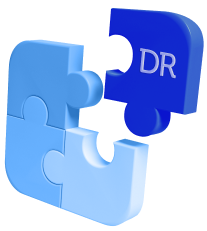Legacy System
A legacy system is old and outdated technology, method, or program that is still in use.
What Is a Legacy System?
A legacy system refers to older software or technology that is still in use within an organization, despite being outdated or unsupported. These systems are often complex and difficult to maintain, and may have limitations in terms of performance, functionality, and compatibility with newer technologies. Legacy systems are typically based on older programming languages or architectures that have been superseded by more modern and efficient alternatives.
What Are the Different Types of Legacy Systems?
There are different types of legacy systems. Here are some common types:
End of Life (EOL) Systems
These are systems that are no longer supported by the vendor and are considered outdated. They are usually replaced by newer versions or alternatives.
Outdated Hardware Systems
Legacy systems can also refer to hardware that is obsolete or no longer in production. This can include older ports, CPUs with incompatible instruction sets, or devices with outdated technologies.
Legacy Software Systems
These are software applications or programs that have been outdated by newer versions or technologies. Legacy software can include outdated file formats, such as Adobe Flash or Lotus 1-2-3, or text files encoded with legacy character encodings.
Custom-Built Systems
Legacy systems can also be custom-built solutions that were developed in-house to meet specific business needs. These systems may have been created using outdated programming languages or frameworks that are no longer widely used.
What Is the Impact of the Continued Use of Legacy Systems?
The continuous use of legacy systems can have several impacts on organizations. Here are some common effects:
High Maintenance Costs
Legacy systems often require specialized skills and knowledge to maintain, which can be costly. The need for ongoing support, hardware updates, and software patches can drive up maintenance expenses.
Limited Scalability
Legacy systems may have limitations in terms of processing power, storage capacity, or the ability to handle a growing user base. This can hinder an organization’s ability to scale its operations and adapt to changing business needs.
Poor Adaptability
Legacy systems can struggle to integrate or interact with newer technologies and systems. This can hinder an organization’s ability to quickly launch new products or services, offer competitive pricing, or implement effective revenue recognition strategies. This can also lead to difficulties in aggregating and analyzing data from multiple sources, inhibiting organizations from gaining crucial insights into customer behavior, market trends, and revenue potential.
Revenue Leakage
One major impact of the continued use of legacy systems is the potential for errors in processing critical data, such as usage data or billing information. When these systems encounter errors or fail to accurately capture and process data, it can result in revenue loss. For example, if a billing system based on a legacy system experiences inaccuracies or inconsistencies in recording customer usage, it can lead to underbilling or overbilling, both of which can result in revenue leakage.
Security Vulnerabilities
As technology advances, legacy systems may lack the robust security features and updates that modern systems have. This can expose organizations to increased security risks such as data breaches or malware attacks.
What Are the Benefits of Modernizing Legacy Systems?
Scalability and Agility
Modernized systems can be more easily scaled to handle growing volumes of data, users, and transactions. They can adapt to changing business needs and market demands, allowing organizations to quickly respond to new opportunities and challenges. This scalability and agility can help organizations stay competitive and support future growth.
Improved Analytics and Insights
Modernizing legacy systems can enable organizations to leverage advanced analytics capabilities. By integrating modern data analytics tools and techniques, organizations can gain deeper insights from their data, make data-driven decisions, and identify patterns, trends, and opportunities that were previously challenging to uncover.
Streamlined Maintenance and Support
Legacy systems often require extensive time, effort, and resources to maintain and support. By modernizing these systems, organizations can reduce the burden of maintenance and support activities. Modern systems typically have better monitoring and diagnostic capabilities, automated maintenance processes, and easier access to skilled resources, resulting in improved system uptime and reliability.
Accelerated Time-to-Market
Modernized systems enable organizations to develop and deploy new features and functionalities faster. By leveraging modern development practices, frameworks, and technologies, organizations can reduce time-to-market for new solutions, enhancements, or updates. This can provide a competitive advantage by enabling organizations to quickly deliver value to customers and respond to market trends.
Regulatory Compliance
Legacy systems may struggle to meet the increasing regulatory requirements and compliance standards. Modernizing these systems allows organizations to implement the necessary controls, security measures, and audit trails to ensure compliance with industry regulations and data privacy laws. This helps mitigate legal and financial risks associated with non-compliance.
Talent Attraction and Retention
Modernized systems often use newer technologies and development practices that are more appealing to skilled professionals. By modernizing legacy systems, organizations can create a more attractive technology environment, attracting and retaining talent with the skills and expertise needed to develop, maintain, and enhance modern systems.
Improved Efficiency
Modernizing legacy systems can streamline processes, automate manual tasks, and optimize workflows, leading to improved operational efficiency. By leveraging new technologies and architectures, organizations can eliminate redundant steps, reduce downtime, and enhance overall productivity.
Greater Flexibility
Legacy systems are usually rigid and often struggle to adapt to changing business requirements. Modernization enables organizations to introduce more flexibility and agility into their operations. By adopting modern architectures and technologies, such as cloud computing or microservices, organizations can rapidly respond to market demands, scale their systems, and easily integrate with other applications and platforms.
Enhanced Customer Experience
Modernized systems can improve customer experience and engagement. By upgrading legacy applications, organizations can provide users with a more intuitive and user-friendly interface, faster response times, and seamless experiences across multiple channels. This can lead to increased customer loyalty and retention.
Cost Savings
While the upfront investment in modernization can be significant, it can also lead to long-term cost savings. Modern systems tend to have lower maintenance costs, reduced downtime, and better scalability. Organizations can also take advantage of pay-as-you-go models, cloud-based services, and automation to optimize resource allocation and control expenses.
What Common Challenges Do Organizations Face When Modernizing Legacy Systems?
Modernizing legacy systems can present several challenges that organizations need to overcome:
Complexity
Legacy systems are often complex, making the modernization process challenging. These systems may have tightly coupled components, outdated technologies, and undocumented code, making it difficult to understand their inner workings. Untangling these complexities and devising a modernization strategy requires careful analysis and planning.
Legacy Code
Legacy systems are typically built using older programming languages and frameworks, which can pose challenges when integrating with modern technologies. Working with outdated code may require additional effort to understand and modify it to align with modern standards and practices. Legacy code may also lack proper documentation, making it harder to maintain and update.
Data Migration
Modernizing legacy systems often involves migrating large volumes of data from the old system to the new one. Ensuring data integrity and compatibility between different data structures and formats can be complex and time-consuming. Data cleansing and transformation may be necessary to align the data with the new system’s requirements. It is crucial to ensure data accuracy and minimize the risk of data loss or corruption during the migration process.
Integration Challenges
Legacy systems are often isolated and may have limited integration capabilities with modern technologies and platforms. Integrating the modernized system with existing or new applications, third-party systems, or cloud services can be challenging due to differences in data formats, protocols, and interfaces. This can require data mediation solutions to bridge the gap between legacy and modern systems.
Cost and Resource Constraints
Modernizing legacy systems can be a resource-intensive and costly endeavor. Organizations need to allocate sufficient time, budget, and skilled resources to plan, execute, and support the modernization process. The need to balance ongoing maintenance and support for the existing system while investing in modernization can pose financial challenges.
Organizational Change
Modernizing legacy systems may require changes in processes, workflows, and organizational structures. It can impact user roles, responsibilities, and expertise requirements. Organizational resistance to change and lack of buy-in from stakeholders can pose significant challenges during the modernization journey.
What Are the FutureTrends in the Modernization of Legacy Systems?
Continual Technology Advancements
With the rapid advancement of technology, legacy systems face the challenge of keeping up with new requirements and capabilities. Future trends in legacy system modernization involve leveraging emerging technologies such as cloud computing, microservices, containerization, and AI. These technologies can help enhance the flexibility, scalability, and functionality of legacy systems.
Cloud-based Modernization
Legacy modernization is increasingly focusing on converting legacy systems into cloud-based services. This approach allows organizations to benefit from the scalability, flexibility, and cost-efficiency of cloud infrastructure. Different approaches, such as refactoring legacy code or full cloud migration, are being considered for cloud-based modernization.
Agile Development and DevOps
Legacy system modernization projects are adopting agile development methodologies and DevOps practices. This enables organizations to iterate and deliver incremental improvements to legacy systems while ensuring collaboration, automation, and faster deployment.



